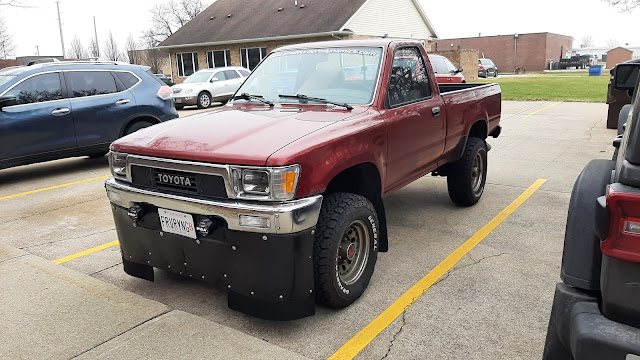Optimizing a Tail for Low Drag: Part 4
Curvature
Now that I
know from my first round of testing which panel orientations have attached
flow, how the pressure behaves with changes in angle, and a rough prediction of
pressure drag reductions from all that information, I’ll move on to a larger
test buck that will start to approximate a full tail. This buck is almost as
long as my maximum length requirement and, rather than a flat
panel like my first board approximations, has some curvature
in it. Specifically, the extension here bends from an angle of about 20° from
horizontal at its front to 23° at its trailing edge, in between the shallowest
and middle angles I tuft- and pressure-tested:
 |
| More fun with the miter saw. |
|
Position |
No Spoiler |
Spoiler Added |
Difference |
|
Rear |
0 Pa |
+10 Pa |
+10 Pa |
|
Center |
-20 Pa |
0 Pa |
+20 Pa |
|
Front |
-60 Pa |
-40 Pa |
+ 20 Pa |
|
Backlight |
-30 Pa |
-30 Pa |
0 Pa |
|
Position |
No Spoiler |
Spoiler Added |
Difference |
|
Rear |
-10 Pa |
0 Pa |
+10 Pa |
|
Center |
-20 Pa |
-10 Pa |
+10 Pa |
|
Front |
-30 Pa |
-30 Pa |
0 Pa |
|
Backlight |
-20 Pa |
-20 Pa |
0 Pa |
|
Position |
No Tail |
Tail |
Difference |
|
Upper |
-20 Pa |
0 Pa |
+20 Pa |
|
Center |
-20 Pa |
-10 Pa |
+10 Pa |
|
Lower |
-30 Pa |
-20 Pa |
+10 Pa |
|
Position |
No Tail |
Tail |
Difference |
|
Upper |
-10 Pa |
-10 Pa |
0 Pa |
|
Center |
-20 Pa |
-10 Pa |
+10 Pa |
|
Lower |
-20 Pa |
-10 Pa |
+10 Pa |
(*Aerodynamic force is exerted by air on a body through only two mechanisms: tangential stress, which acts along the body surface, and normal stress, which acts perpendicular to the body surface and which we call pressure).
This
partial tail reduces drag in another way, by raising the pressure acting on the
base of the car. I alluded to this in a comment on another post, but here it is verified with a real example. Even lower down, in the
center of the rear bumper cover, measured pressure was higher with the tail
board on the car than without.
Previous: Optimizing a Tail for Low Drag: Part 3













Comments
Post a Comment